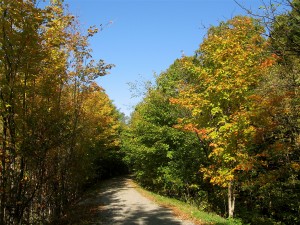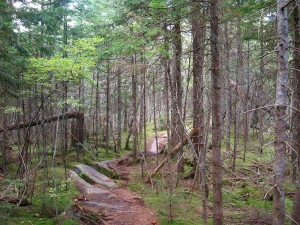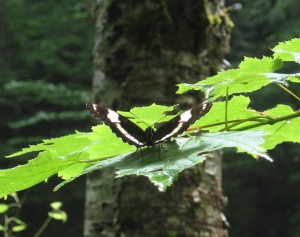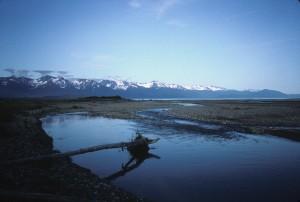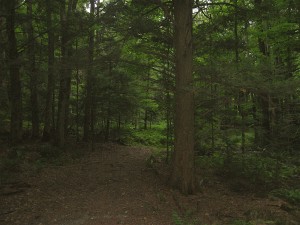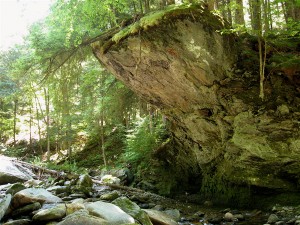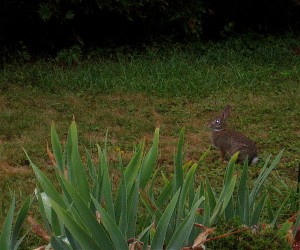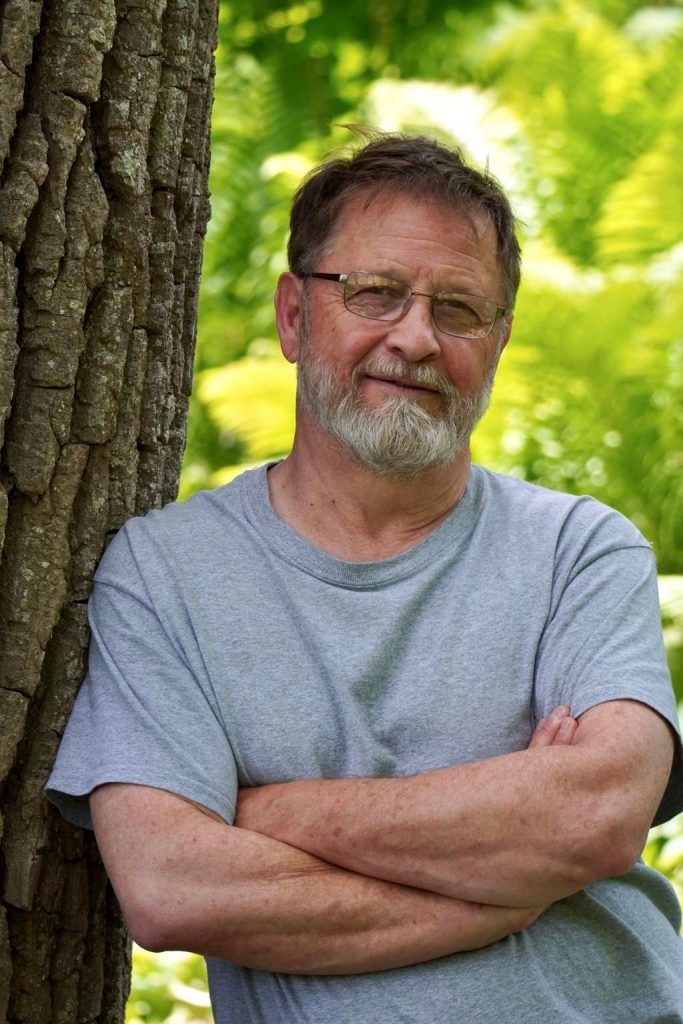Nov 05 2011
Pantheistic
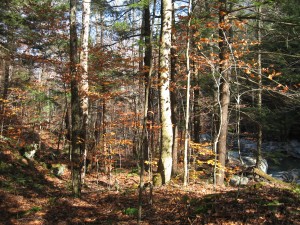 Recreation. Making good use of a precious day off from work, I head for the hills to re-create myself. It’s a cool, sunny day in late autumn and everything I need is stuffed into the small rucksack on my back. I step into the woods, following a favorite stream deep into the Green Mountains. My dog Matika, wearing a blaze orange vest, bounds ahead of me all smiles. She’s just as happy as I am to be here.
Recreation. Making good use of a precious day off from work, I head for the hills to re-create myself. It’s a cool, sunny day in late autumn and everything I need is stuffed into the small rucksack on my back. I step into the woods, following a favorite stream deep into the Green Mountains. My dog Matika, wearing a blaze orange vest, bounds ahead of me all smiles. She’s just as happy as I am to be here.
It’s a hunter’s forest. A few brown and gold leaves still cling to branches but most of them are on the ground now. Slightly overdressed in thermals and wool shirt, I quickly break into a sweat. And yet I feel a chill in the air whenever I stop to catch my breath. Oh yeah, it’s that time of year.
It’s a hunter’s forest but I’m not hunting for anything in particular today – not game, not adventure, not deep thought. I have no agenda, really. I’m just out here to groove with the elements and forget about all that nonsense in the lowlands. It’s enough to simply move, to sweat, and occasionally rock-hop across the stream. And yet a moment comes when I start pondering the order and chaos of the natural world, wondering half consciously where the laws of nature come from. Then I stop and look around me in pantheistic ecstasy, convinced on the most visceral level that the universe is far from being random.
I recently read The God Delusion, a manifesto of atheism penned by a renowned biologist named Richard Dawson. I was deeply disappointed by it, as I am by most religious and anti-religious texts. Professed atheists do not take pantheism any more seriously than religious fundamentalists do. These two camps are too busy warring with each other to consider any other possibilities – namely that the laws of nature have to come from somewhere, that “god” and “nature” are different words for the same thing. A few pensive souls like myself speak up but we are quickly dismissed. There is little room in most human minds for the obvious. Warring – the battle between good and evil – is so much more engaging.
“Let it go,” I tell myself, as I tramp through the woods. I didn’t come out here to think. I came out here today to leave all that nonsense behind. I came out here to groove with the wild, feel the truth of it, and reconnect with What-Is in a way that doesn’t translate into any kind of -Ism. So I whistle to Matika to follow as I change direction, rock-hopping across the stream one more time. By the end of the day, I will be re-created and ready to return to the lowlands. But right now, I just want to worship nature in the simplest and most direct way possible.


